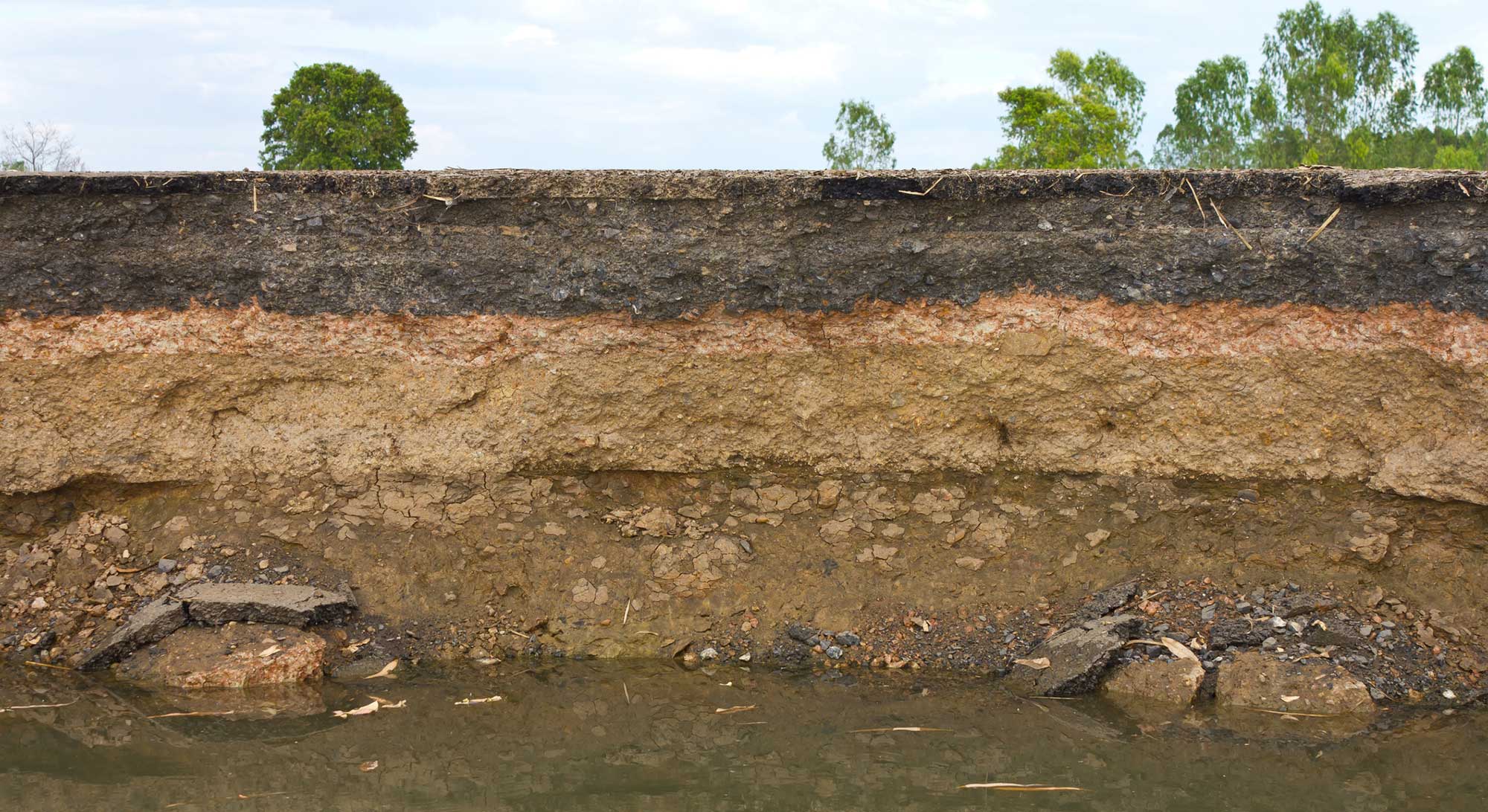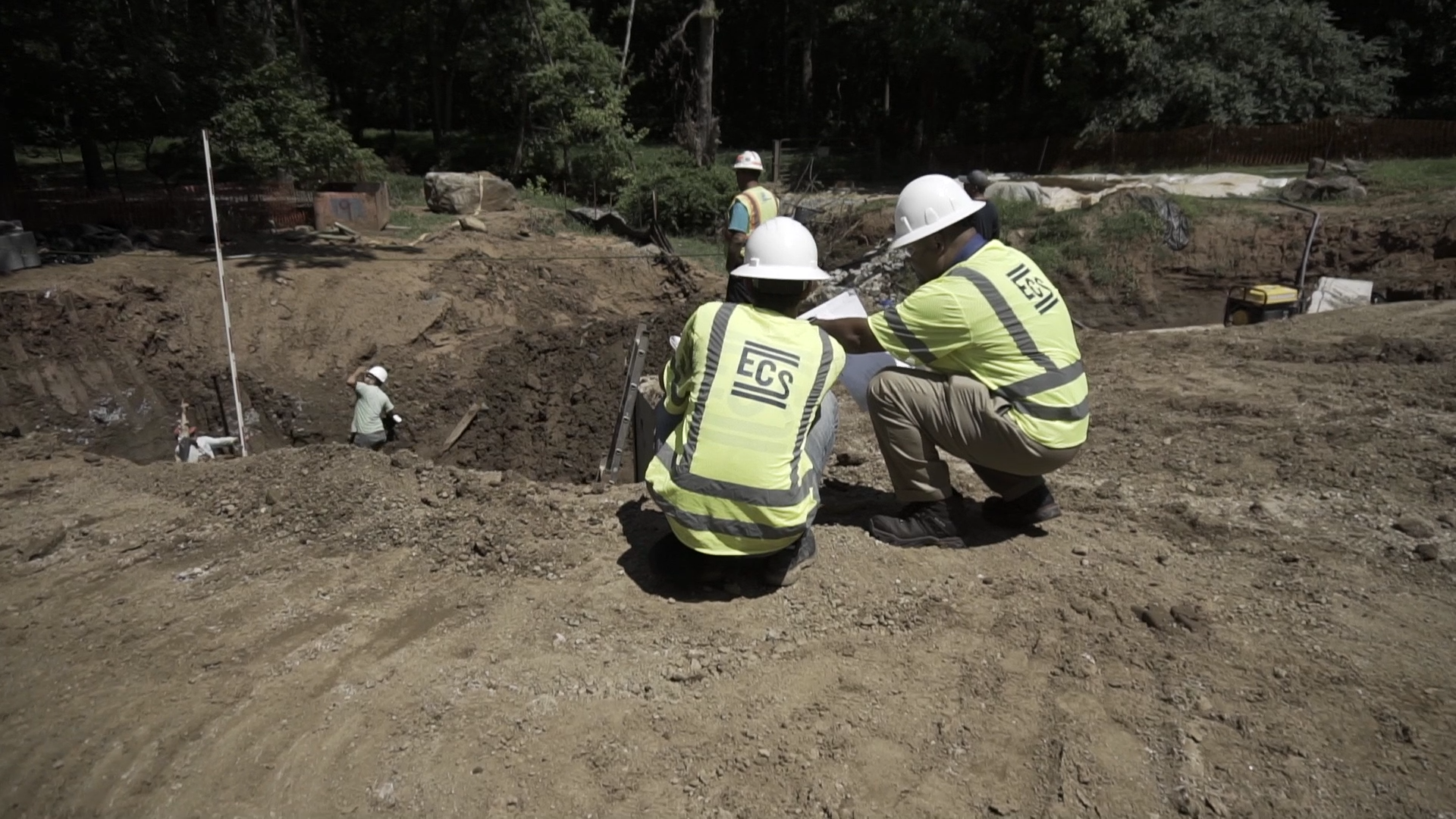There are a few methods for subsurface exploration and investigation. Your geotechnical engineer could choose to start the investigation using various techniques, such as:
Conventional Soil Boring
The engineer will start with a drill rig to gather soil and rock cores to take a Standard Penetration Test (SPT). This reading provides the values for soil strength, which gives you an idea of bearing capacity and settlements.
Cone Penetrometer Testing
With this method, you will use sensors to gather information about the land’s subsurface. The sensor has a cone-shaped tip that you push through the soil, allowing you to collect information about the tip and sleeve resistance, seismic shear wave velocity and pore water pressure.
Test Pits
Your tester will create a pit that is 12 feet in depth or less. This method is quite visual in that you will be able to clearly see what is going on beneath the surface of your work area.
Ground-Penetrating Radar
Ground-penetrating radar is another less-invasive approach to subsurface exploration. Your geotechnical engineer will use pulsating electromagnetic energy to understand what is beneath the surface. This method is beneficial for jobs with limited access or other restrictions that do not allow drilling and excavating.
Get More Information On Our Techniques
There are a few methods for subsurface exploration and investigation. Your geotechnical engineer could choose to start the investigation using various techniques, such as:
Conventional Soil Boring
The engineer will start with a drill rig to gather soil and rock cores to take a Standard Penetration Test (SPT). This reading provides the values for soil strength, which gives you an idea of bearing capacity and settlements.
Cone Penetrometer Testing
With this method, you will use sensors to gather information about the land’s subsurface. The sensor has a cone-shaped tip that you push through the soil, allowing you to collect information about the tip and sleeve resistance, seismic shear wave velocity and pore water pressure.
Test Pits
Your tester will create a pit that is 12 feet in depth or less. This method is quite visual in that you will be able to clearly see what is going on beneath the surface of your work area.
Ground-Penetrating Radar
Ground-penetrating radar is another less-invasive approach to subsurface exploration. Your geotechnical engineer will use pulsating electromagnetic energy to understand what is beneath the surface. This method is beneficial for jobs with limited access or other restrictions that do not allow drilling and excavating.
Get More Information On Our Techniques



